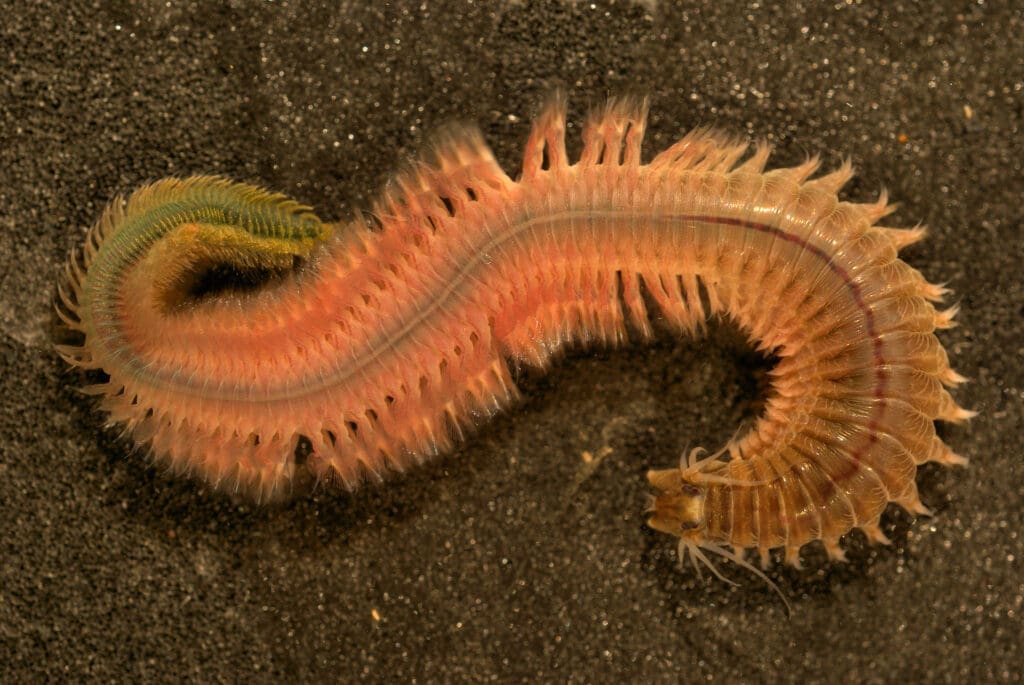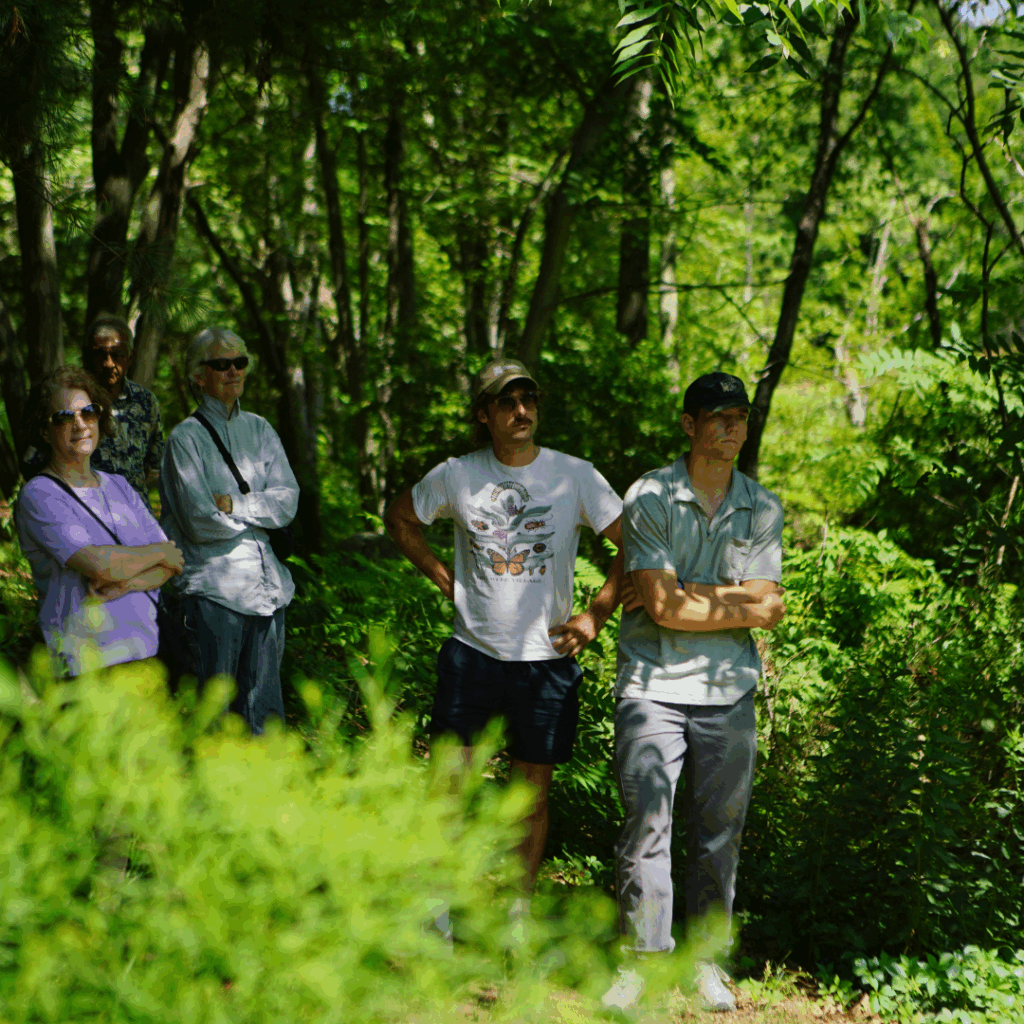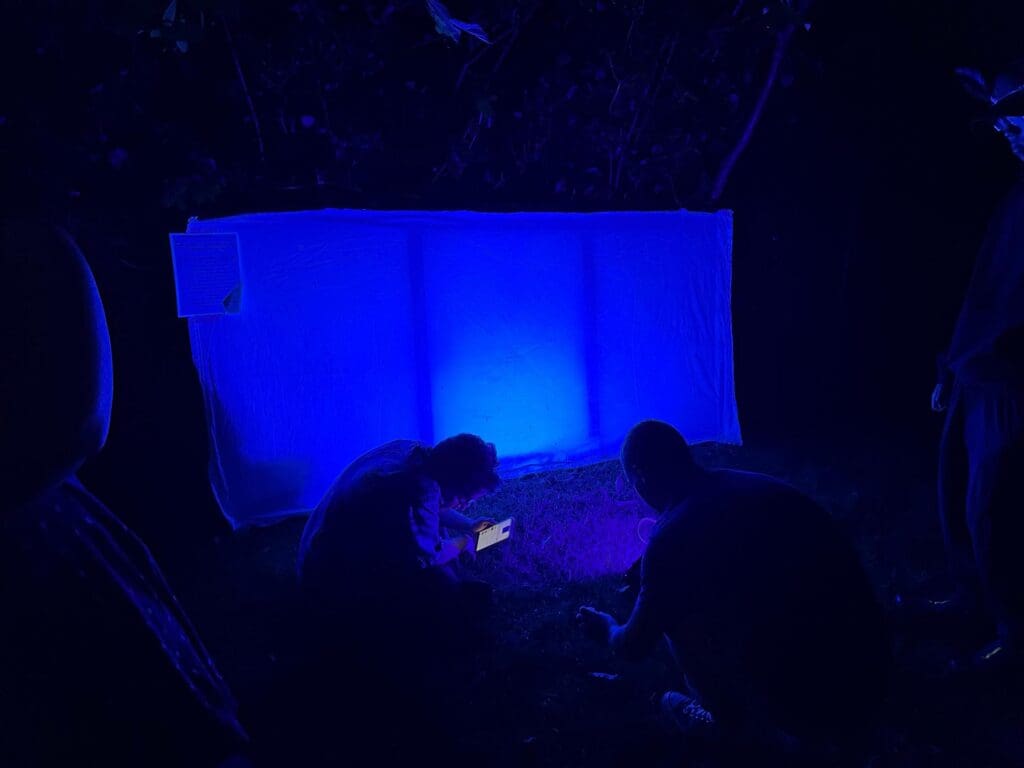What sort of worm is festooned with sensitive tentacles all the way down its sides and – though it can’t bark – has a nasty bite?
That would be the “clam worm” or alitta succinea, a denizen of estuarial waters.

Alternative names
I’ve always called them “seaworms” but they are normally known as “clam worms,” “ragworms,” “sand worms” or “pile worms”, and they are a species of annelid, the phylum of segmented worms.
Size and habitat
The clam worm can reach up to 15 cm (almost 6 inches) but most are smaller. This worm is reddish-brown in color, and has four eyes, tentacles or flaps all the way down its sides which can also function as gills, and sensory feelers at its head.
When hungry, it uses a long internal mouthpart called a proboscis, along with two hooks that unfold to capture and then draw prey into a mouth at its front end. These worms are themselves an important food source for fish and crustaceans, and are widely used as fishing bait. Their typical habitat is rocks, vegetation, reefs, and mud. They burrow into the mud or sand, or hide under rocks, to be safe from many potential predators.

My own first encounter
In my early teens, my father and I used to fish for striped bass with a flashy lure with a seaworm strung on a hook behind it. “Here’s how you do it,” my father counseled me. “Just poke the worm in its mouth and, as soon as it opens, insert the hook point.”
“Owww!!!” I exclaimed. “This worm bit me!” My father laughed, almost as hard as during one of my earlier ‘learning moments’ in a Maine field, when halfway over an electric fence I got shocked! On neither occasion did I expect the bite, but I eventually learned to be more careful. Those pincers were sharp!
The pincers’ zinc content makes them strong while keeping them very lightweight. They certainly drew my blood that first time! The fish surely liked these worms, but eventually I gave them up for flies (less messy and easier on the worms).
Spawning behavior
During the full and new moon tides in the late spring and early summer, these clam worms undergo a process called epigamy, which enlarges their parapodia (tentacles) so they can swim more easily to the surface to release their eggs and sperm, at which point their bodies rupture and disintegrate. Talk about dying to reproduce! One hopes at least they have fun on their way out. Their fertilized eggs then settle to the bottom and hatch into a new generation.
Replacement parts
These worms can replace various body parts, and make new worms from broken pieces, such as when their tails are pulled off by a predator. But rear body segments are more readily repaired than heads, which are much harder to replace – those of us our heads still on can probably relate!
Check out a short video on clam worms and their special properties:
Their role in marine ecosystems
The tunneling and boring of marine worms irrigate and oxygenate the shallow water pools encouraging beneficial plant and algae growth. Whether it’s in tide pools, lowland waters or oceanic reefs, the marine worm’s primary ecological contribution is as sustenance for aquatic animals further up the food chain. Species of these worms respond quickly to increased amounts of pollution in the water and on the ocean bottom. Their presence or absence may indicate important changes in the marine environment.
Some subspecies are at risk, but clam worms are OK
Most of this species is doing just fine, at least when not being used for bait or eaten by humans. However, you might just want to think twice before skinny dipping on May-June new or full moon tides!
By Fred Jennings








